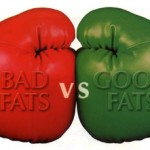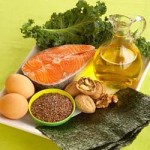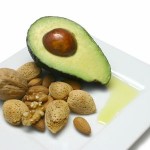Podcast 42: Will Immunity-Boosting Foods, Supplements and Super-dosing prevent COVID-19?
As we move through the rollercoaster ride of what’s been the last year and take
It is recommended for Canadians 19 years and older to consume between 20% and 35% of their daily calories from fat.  This often catches many individuals off guard, thinking this is a large amount. The thing to recognize is that unlike protein and carbohydrate, which both provide 4 calories per gram consumed, fats provide 9 calories per gram consumed. So, it still does require for us to consume a smaller dose when you consider the total quantity (weight in grams).
This often catches many individuals off guard, thinking this is a large amount. The thing to recognize is that unlike protein and carbohydrate, which both provide 4 calories per gram consumed, fats provide 9 calories per gram consumed. So, it still does require for us to consume a smaller dose when you consider the total quantity (weight in grams).
Next thing is to ask where your fat calories come from. There are unhealthy fats (saturated and trans fats), and healthy fats (monounsaturated and polyunsaturated fats). The healthy fats provide many more health benefits, and it is recommended to replace the unhealthy fats with healthy fats in your diet. Saturated and trans fats are hard at room temperature, and come from beef, butter, whole milk, processed foods, baked goods, convenience foods, and deep fried foods. Though these food sources may sometimes contain healthy sources of fat, it is not often. Healthy fat sources are liquid at room temperature and include those found in nuts and seeds, plant-based oils (vegetable, extra virgin olive oil, flaxseed oil, avocado oil), cold water fish (salmon, trout, mackerel), olives and avocados.
Fats in your diet provide many functions. Dietary fats support many bodily functions, cushioning, and helps the body absorb fat-soluble vitamins (Vitamins A, D, E, and K). Dietary fats also help your body produce important hormones as well, acting as messengers to help  protein carry out their roles. Fat also digests slower, so including a small amount in your meal and snack will help keep you fuller for longer. Adding peanut butter to your oatmeal in the morning, or on top of your toast is a great choice for a healthy fat, helping to keep you fuller longer. Think about adding a healthy oil, avocado, or nuts or seeds to your salad. Cooking with plant-based oils is definitely a bonus, but remember, quantity matters. Most oils have a higher content of monounsaturated and polyunsaturated fats, and less saturated fat (canola, flaxseed, safflower, olive oil). There are however, a few plant oils (coconut oil, palm oil and palm kernel oil), which are solid at room temperature, and therefore, contain more saturated fat in them (as explained above).
protein carry out their roles. Fat also digests slower, so including a small amount in your meal and snack will help keep you fuller for longer. Adding peanut butter to your oatmeal in the morning, or on top of your toast is a great choice for a healthy fat, helping to keep you fuller longer. Think about adding a healthy oil, avocado, or nuts or seeds to your salad. Cooking with plant-based oils is definitely a bonus, but remember, quantity matters. Most oils have a higher content of monounsaturated and polyunsaturated fats, and less saturated fat (canola, flaxseed, safflower, olive oil). There are however, a few plant oils (coconut oil, palm oil and palm kernel oil), which are solid at room temperature, and therefore, contain more saturated fat in them (as explained above).
As mentioned above, including fats in meals and snacks slows down the digestion of the foodstuff, so, you wouldn’t want a meal or snack too high in fat right before a workout. Following digestion, fat breaks down and is either stored in adipose tissue (as fat), or used as energy by muscle (via a number of chemical reactions), IF muscle requires it. During prolonged activity, your muscles will use up the stored glycogen pools (stored carbohydrate) first. The energy in your body that is stored as fat (in adipose tissue) is then released, broken down into smaller pieces by an enzyme, lipase, and transferred to the blood stream where your muscles then pick it up to be oxidized into energy for your muscles to use during exercise. The type of fat, triglycerides, that are stored in adipose (fat tissue), have a high caloric content, and therefore, provide energy.
For active individuals, omega-3 fatty acids are important to include in your diet. On top of their heart health benefits and ability to lower cholesterol, omega-3’s have been shown to be beneficial to individuals with high activity levels, as any activity adds stress to the body, and helps in recovery to decrease inflammation. Some research has indicated that omega-3 may help to relieve joint pain as well. Choose these foods to make sure you get your omega-3’s each day: cold water fish, fortified milk products (with omega-3 in particular) walnuts, tofu, flaxseed oil, ground flaxseed, chia seed, or hemp seed.
 The human body needs small daily doses of healthy fat. There are a number of food options available to help you include fat throughout your day. Remember, a little goes a long way, so do be mindful of how much you include throughout your meals and snacks!
The human body needs small daily doses of healthy fat. There are a number of food options available to help you include fat throughout your day. Remember, a little goes a long way, so do be mindful of how much you include throughout your meals and snacks!
As we move through the rollercoaster ride of what’s been the last year and take
The uncertainty of COVID-19 has impacted everyone differently, but from a food security perspective, many